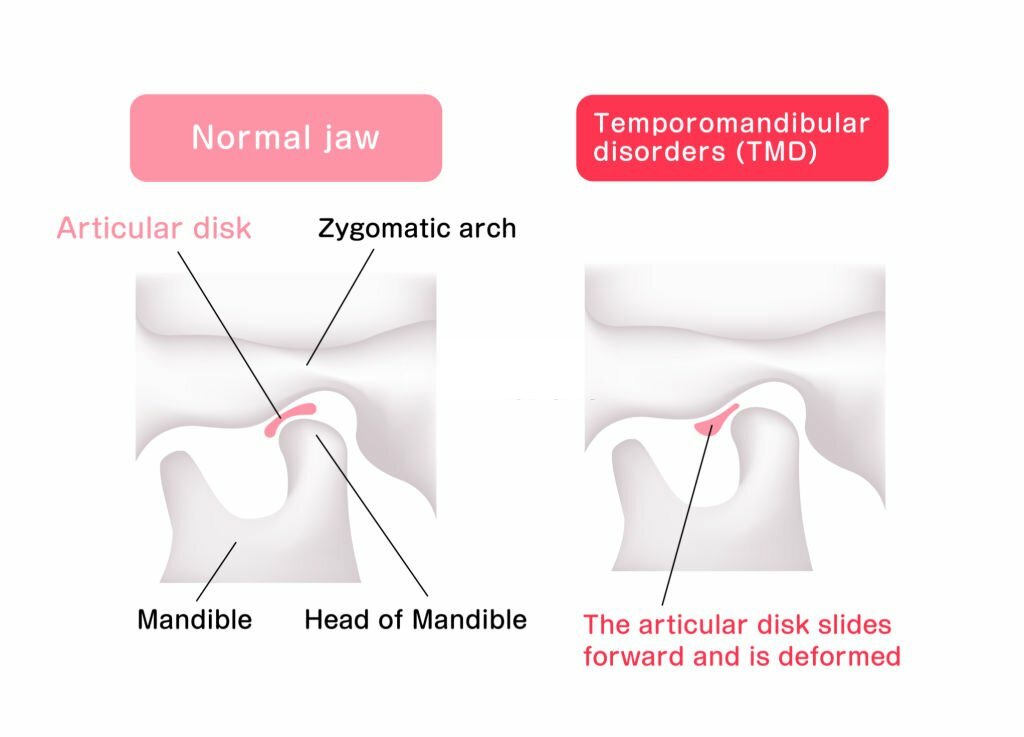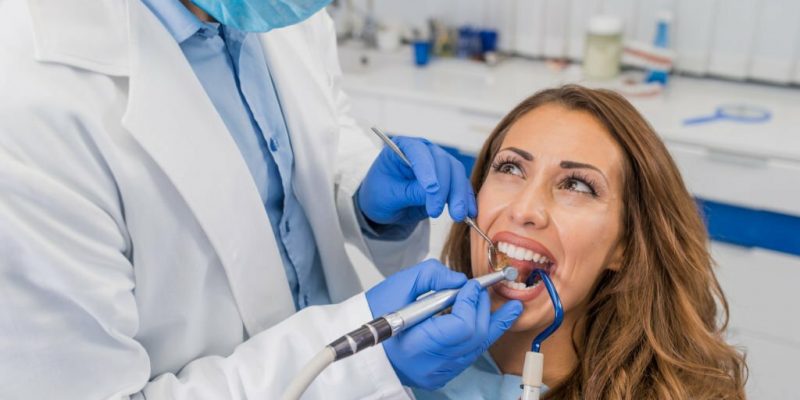TMJ disorders are prevalent and can affect people of all ages, but often, they go undiagnosed and unreported. Only about 50-60% of people with TMJ disorder seek treatment and are going to the dentist with TMJ.
Suffering TMJ can be painful and challenging, but we are here to help! In this blog, we take a closer look at:
- TMJ In Dentistry: What Is It About?
- Leading Causes Of TMJ Disorders
- Diagnosis Options For TMJ Patients
- TMJ Management & Treatment Options
Continue reading as we understand more about the disorder while closely examining TMJ dentist treatment and finding answers to all your queries.
Introduction:
1 out of every 12 people in the United States are currently affected by a TMJ Disorder, and it’s more common in women than you think.
Research suggests a recorded prevalence of TMJ disorders globally. The numbers have moved from 7% to 30%.
TMJ, or Temporomandibular Joint, connects your jawbone to your skull like a sliding hinge. TMJ disorders usually cause pain in the jaw joint and the muscles controlling the jaw movement.
Interestingly, however, there are several aspects of TMJ dentistry. Let’s follow them closely in the following sections.
TMJ In Dentistry: What Is It About?
TMJ (temporomandibular joint disease) occurs when your jaw joint does not function properly due to various factors. Although this appears to be a simple topic, the consequences can be complex and far-reaching.
Your jaw joint is located at a crucial junction in your body. It directly affects eating, drinking, speaking, and breathing. The muscles that regulate your jaw work in tandem with the muscles that maintain your neck in alignment to support your head and those on your scalp and face.
Usually, a TMJ disorder is categorized into three different categories, namely:
- Disorders of your chewing muscles
- Disorders of your jaw joints
- Headaches that result from TMD
What’s more? Your ear is close to your jaw joint, and significant nerves and blood vessels pass through it, making TMJ disorder a critical situation that you must assess immediately.
Leading Causes Of TMJ Disorders
When visiting your TMJ dentist, you might be surprised to know that there is no particular cause behind the disorders. It can have multiple reasons, often due to a combination of different factors.
Here’s an overview of the most common causes and contributing factors to a TMJ disorder:
Jaw Injury or Trauma: A direct blow to the jaw or any injury to the TMJ can lead to the development of a TMJ disorder.
Teeth Grinding (Bruxism): Habitual clenching or grinding of teeth can put excessive pressure on the TMJ and its surrounding muscles, leading to TMJ problems.
Misaligned Bite: Malocclusion or an improper bite can strain the jaw joint, causing pain and discomfort over time.
Arthritis: Conditions like osteoarthritis and rheumatoid arthritis can affect the TMJ by causing damage to the joint’s cartilage.
Joint Structural Anomalies: Congenital or developmental abnormalities in the structure of the jaw or the TMJ itself can increase the risk of TMJ disorders.
Maladaptive Bite Splints or Orthodontic Devices: Poorly designed or ill-fitting oral appliances used in dental treatment can potentially exacerbate TMJ symptoms.
Genetics: Some individuals may have a genetic predisposition to TMJ disorders, making them more susceptible to developing the condition.
Stress: Chronic stress can lead to jaw clenching and teeth grinding, contributing to the development of TMJ disorders.
Similar to the causes, several trigger points can aggravate dental and TMJ disorders. Here’s an overview of different factors that make TMJ disorder worse:
- Using your teeth to tear off cloth tags or other objects
- Poor posture can strain your neck, face muscles, and shoulder, resulting in TMJ.
- Overusing jaw muscles due to activities like chewing gums excessively or chewing on ice can also contribute to TMJ disorders.
- Daytime teeth are clenching or grinding.
- Sleeping on your stomach.
Now that we know the common causes, let’s look at some TMJ fix in the following section.
Diagnosis Options For TMJ Patients
A TMJ dentist can diagnose if a TMJ dysfunction is discovered after a dental or physical examination. They will observe the range of motion of your mouth when you open or close it and press on your face to check the areas of discomfort or feel around the jaw joints.

Apart from that, temporomandibular joint disorder dentists can also perform certain imaging tests to get a closer look at the jaw joints and the structures around them.
These tests include:
- Dental X-rays
- CT (Computed tomography) scans
- MRI (Magnetic Resonance Imaging)
- TMJ arthroscopy.
Based on the test results, your dentist will suggest several management and treatment options for your TMJ disorder.
TMJ Management & Treatment Options
The primary goal of managing and treating TMJ disorders is alleviating your symptoms, enhancing jaw function, and minimizing discomfort.
Here are the various management and treatment options for TMJ disorders:
- Lifestyle Modifications- These include making small changes in your daily lives, which can significantly reduce the risks of getting TMJ disorders, like eating soft foods, avoiding extreme jaw movements, and practicing relaxation techniques to manage stress.
- Physical Therapy- Special exercises provided for TMJ fix by therapists or manual therapy, including massage and joint mobilization, can be helpful.
- Oral appliances- Splints or mouthguards are custom-made to fit your mouth and help alleviate symptoms by reducing clenching and grinding teeth. Orthodontic treatments and dental work are also an option that you can consider in TMJ.
- Medications- Over-the-counter pain relievers like ibuprofen can help manage the pain and inflammation. Apart from that, muscle relaxants or low doses of tricyclic antidepressants might be prescribed by dentist TMJ.
The choice of TMJ treatment is influenced by various factors, including the root cause and the extent of pain you are experiencing. Typically, TMJ treatment dentists start with noninvasive interventions such as medications and nonsurgical approaches. If there is no improvement in symptoms, then surgical procedures, including jaw surgery, are your last resort!
Takeaway
- The development of TMJ disorders can be multifactorial
- The triggers of this disorder in one person may not be the same for another.
- TMJ (temporomandibular joint disease) occurs when your jaw joint does not function properly due to various factors.
- If you are experiencing TMJ disorder symptoms, you must consult professionals of TMJ dentistry for accurate diagnosis and treatment.

